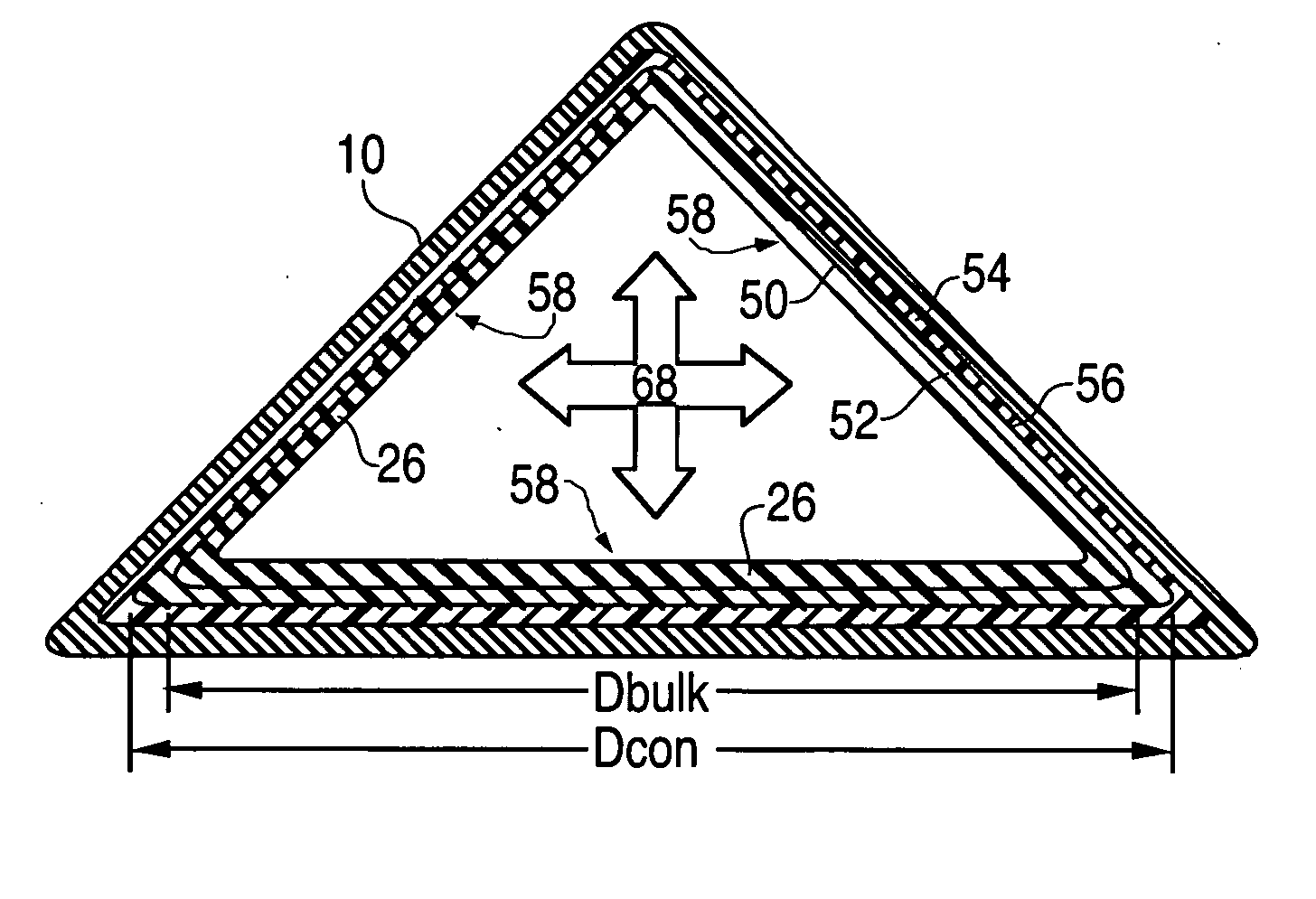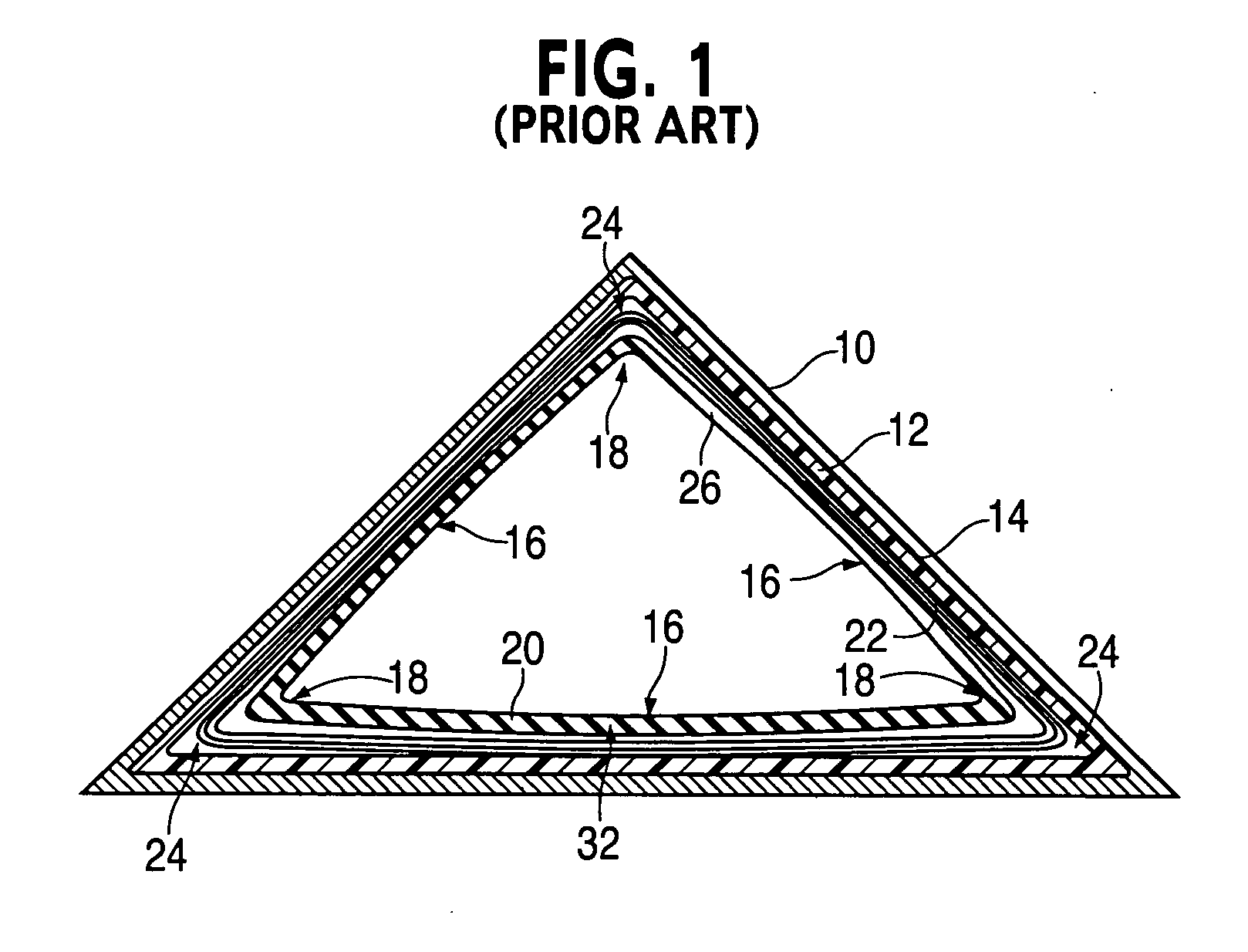Corner-consolidating inflatable apparatus and method for manufacturing composite structures
a technology of consolidating inflatable equipment and composite parts, which is applied in the field of composite part manufacturing, can solve the problems of poor consolidation or resin richness of composite materials in corner regions, inferior material properties, and general limitation of the use of mandrels for composite parts, etc., and achieves the effect of convenient and inexpensive manufacturing
- Summary
- Abstract
- Description
- Claims
- Application Information
AI Technical Summary
Benefits of technology
Problems solved by technology
Method used
Image
Examples
Embodiment Construction
[0020] An embodiment in accordance with the present invention provides an inflatable compaction tool that can be inflated inside a hollow or tubular faceted mold to compress a composite material against the interior walls and corner regions of the mold. The disclosed inflatable compaction tool combines the conformable and reusable aspects of an inflatable mandrel and the consolidation aspects of a solid mandrel having a relatively high coefficient of thermal expansion. The inflatable compaction tool can be used either with enclosed, hollow molds or with open-ended, tubular molds that have a combination of relatively flat wall regions joined by corner regions with internal radii. For example, the inflatable compaction tool can be used to manufacture aircraft fuselage composite stringers having a trapezoidal, or “hat-shaped,” cross section.
[0021] Before inflation, the compaction tool can have external walls that generally conform to the shape of the internal surfaces of the correspon...
PUM
| Property | Measurement | Unit |
|---|---|---|
| compress | aaaaa | aaaaa |
| hollow shape | aaaaa | aaaaa |
| force | aaaaa | aaaaa |
Abstract
Description
Claims
Application Information
 Login to View More
Login to View More - R&D
- Intellectual Property
- Life Sciences
- Materials
- Tech Scout
- Unparalleled Data Quality
- Higher Quality Content
- 60% Fewer Hallucinations
Browse by: Latest US Patents, China's latest patents, Technical Efficacy Thesaurus, Application Domain, Technology Topic, Popular Technical Reports.
© 2025 PatSnap. All rights reserved.Legal|Privacy policy|Modern Slavery Act Transparency Statement|Sitemap|About US| Contact US: help@patsnap.com



